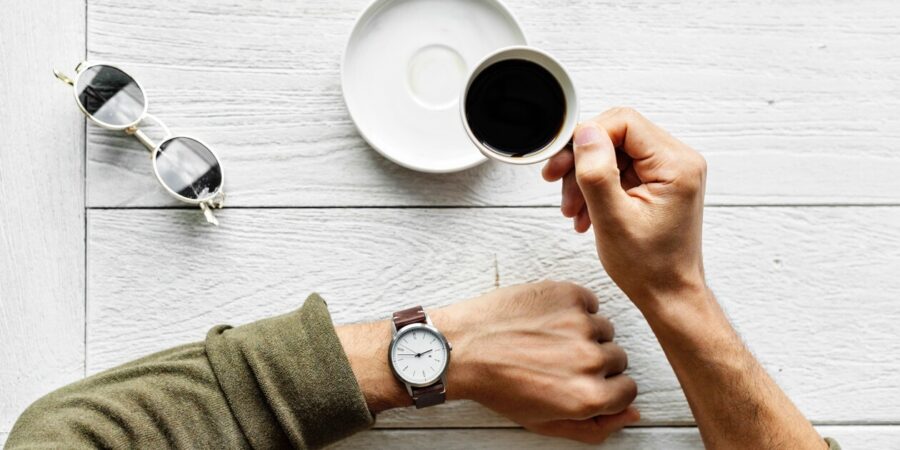Choosing the right media partner is a crucial step in successfully selling your products. A media partner can help you reach a broader audience, improve brand visibility, and drive sales through the right channels. To ensure you select the best partner for your business, consider the following steps:
1. Define Your Objectives
- What it is: Clearly outlining your business goals and what you hope to achieve by partnering with a media company.
- Why it works: Knowing your objectives allows you to find a media partner that aligns with your goals, whether it’s increasing brand awareness, driving sales, or promoting a new product.
- How to do it:
- Identify the specific outcomes you want from the partnership (e.g., increase in website traffic, sales growth, lead generation).
- Determine the key performance indicators (KPIs) to measure success (e.g., conversion rates, cost per acquisition, audience engagement).
Example: If you’re launching a new product, your goal might be to reach 100,000 potential buyers within the first month.
2. Understand Your Target Audience
- What it is: Knowing who your ideal customers are and where they spend their time online or offline.
- Why it works: A media partner that can reach your target audience effectively is essential for driving sales and delivering results.
- How to do it:
- Create a detailed customer profile including age, gender, income level, location, interests, and online behaviors.
- Research the media channels your audience uses most (social media, television, radio, digital publications, etc.).
- Choose a media partner with a strong presence in those channels.
Example: If you’re targeting millennials, you may want to work with digital platforms like Instagram, YouTube, or podcast networks.
3. Evaluate the Media Partner’s Reach
- What it is: Assessing the audience size and demographics of a media partner to determine whether they can effectively promote your product.
- Why it works: The broader and more relevant the reach of your media partner, the higher the potential for driving sales.
- How to do it:
- Review the media partner’s audience demographics, engagement metrics, and content distribution methods.
- Check the media company’s track record and success with other brands in your industry.
- Ask for case studies or previous campaign results that demonstrate their ability to reach and engage your target market.
Example: A local radio station may have a loyal, regional audience but may not be the right fit if you’re trying to reach a global or digital-first market.
4. Consider Multi-Channel Capabilities
- What it is: Choosing a media partner that can promote your product across multiple channels for greater visibility.
- Why it works: Multi-channel marketing ensures your products are seen by a diverse audience, increasing brand awareness and opportunities for sales.
- How to do it:
- Look for media partners that offer services across various platforms (social media, TV, radio, email marketing, display ads, etc.).
- Determine which platforms are most relevant to your audience and ensure the partner has expertise in those channels.
- Coordinate campaigns that use a mix of digital and traditional media to maximize impact.
Example: If your product appeals to both older and younger demographics, you might partner with a company that can run ads on both Facebook and YouTube as well as local television stations.
5. Analyze Content Creation Expertise
- What it is: The ability of your media partner to produce high-quality, engaging content that resonates with your target audience.
- Why it works: Compelling content is key to capturing attention and driving sales. If your media partner can create relevant, on-brand content, you’re more likely to achieve success.
- How to do it:
- Review the content your media partner has created for other brands and assess its quality, relevance, and impact.
- Ensure they understand your brand voice and message, and can translate it into effective ads, articles, videos, or social media posts.
- Request a content strategy proposal, including the types of content they recommend for your campaign (e.g., blog posts, infographics, video ads).
Example: A media partner with a strong creative team can help you develop an engaging video ad that tells your product’s story and drives emotional engagement.
6. Assess the Partner’s Technology and Analytics
- What it is: A media partner’s ability to track, measure, and report on campaign performance using advanced analytics tools.
- Why it works: Access to real-time data and insights allows you to make informed decisions, optimize campaigns, and ensure you get a solid return on investment (ROI).
- How to do it:
- Ask your potential media partner about the analytics tools they use to track campaign performance.
- Request regular reports on key metrics like impressions, clicks, conversions, and sales.
- Ensure they can provide insights into audience behavior, engagement, and overall campaign effectiveness.
Example: A media partner who uses advanced tracking tools like Google Analytics, Facebook Pixel, or programmatic advertising platforms can help you see which ads are generating the most sales.
7. Look for Strong Industry Knowledge
- What it is: Partnering with a media company that has a deep understanding of your industry and market trends.
- Why it works: Industry knowledge helps ensure the partner knows how to speak to your target audience and position your product effectively within the competitive landscape.
- How to do it:
- Find out if the media partner has experience working with companies in your industry.
- Look for a partner who understands the specific challenges, regulations, and market conditions in your sector.
- Ask about their experience running campaigns for similar products or services.
Example: A media partner experienced in fashion retail will understand how to showcase your products visually and tap into influencer marketing strategies for better results.
8. Ensure Flexibility and Customization
- What it is: Choosing a media partner that can tailor their services and campaigns to your specific needs.
- Why it works: Every business is different, and your media partner should be willing to create a custom strategy that fits your goals and budget.
- How to do it:
- Ask whether they offer custom campaign options instead of one-size-fits-all packages.
- Look for a partner willing to adapt the campaign based on performance and feedback.
- Ensure they are open to adjusting strategies in real-time to respond to changing market conditions or campaign results.
Example: A customizable approach might include testing different ad formats, adjusting budgets mid-campaign, or launching targeted ads during peak seasons for your product.
9. Discuss Pricing and ROI
- What it is: Understanding the cost of services and how the media partner measures success.
- Why it works: A clear understanding of pricing structures and expected ROI ensures you invest wisely and avoid overspending.
- How to do it:
- Ask for a transparent breakdown of pricing, including any setup fees, ad spend requirements, and campaign management costs.
- Ensure you understand how they measure and report ROI.
- Discuss how they optimize campaigns to ensure you’re getting the best results for your investment.
Example: A media partner might charge a percentage of your ad spend, but you need to ensure they have systems in place to maximize ROI, such as audience targeting and campaign optimization.
10. Check Reputation and Client Reviews
- What it is: Evaluating the media partner’s reputation, client success stories, and reviews.
- Why it works: Positive testimonials and a proven track record of success increase your confidence that the media partner can deliver results.
- How to do it:
- Look for reviews and testimonials from previous clients.
- Ask for case studies or examples of past campaigns that align with your business goals.
- Contact past clients to inquire about their experience with the media partner, focusing on communication, results, and support.
Example: If a media partner has consistently helped other businesses double their leads or sales, it’s a strong indicator they could do the same for you.
Conclusion
Choosing the right media partner can significantly boost your product’s sales and market presence. By focusing on audience alignment, multi-channel capabilities, strong content creation, and analytics, you can ensure your partnership drives the results you need. With the right strategy and partner, your advertising campaigns can reach a larger audience, build trust, and convert leads into customers.


Leave a Reply